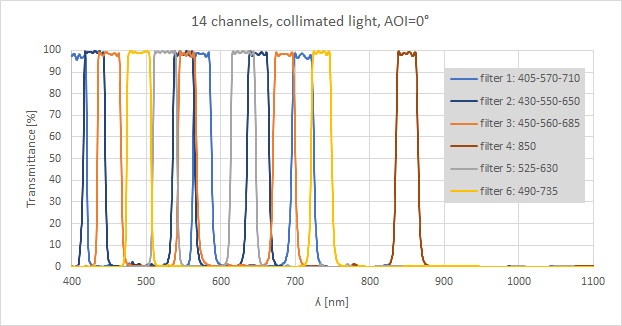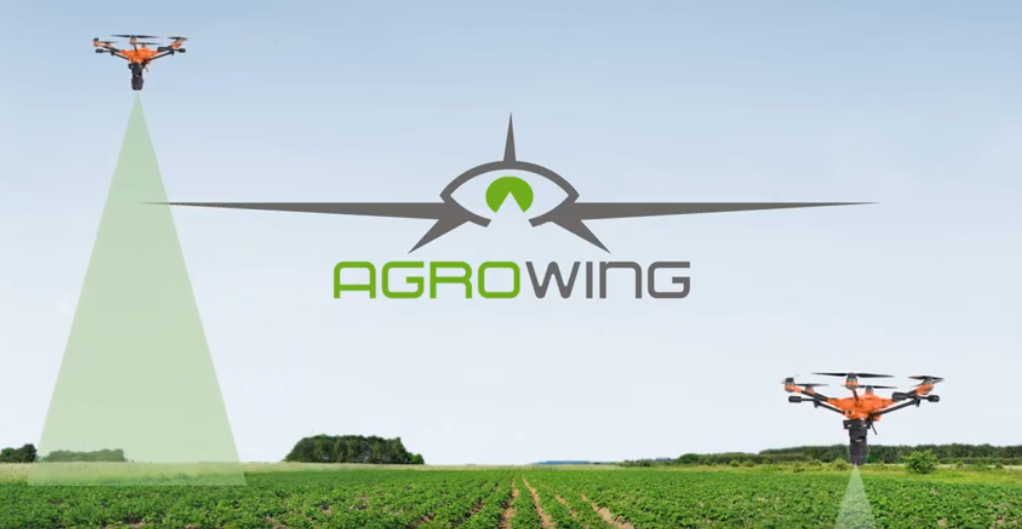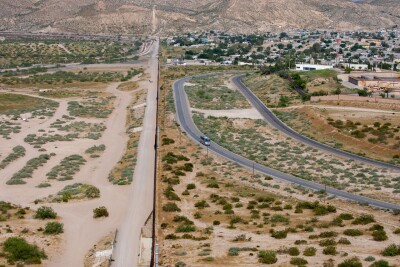Agrowing’s AI-enabled, 12 narrow band multispectral sensor with 12 megapixels per band caught the eye of the media at Commercial UAV Expo last year, but their new sensor has taken this technology to the next level. With 14 Narrow Bands of 8 Megapixel per band, Agrowing's brand new sensor provides imagery of 1.7cm per pixel ground resolution from 100m altitude and 0.5mm per pixel from 3m altitudes to help create that many more opportunities in agriculture and beyond.
The advantages that this 14-band sextuple lens multispectral sensor provides are numerous, but the key differentiators are about image quality and usability. The 1.7cm per pixel that Agrowing’s new sensor can capture compares very favorably to others that capture a mere 4.2cm per pixel. More than double dynamic range, the sensor can also acquire imagery from a short distance, as the lenses are adjacent to each other. Because of this, users don’t have to guess based on reflectance what kind of disease or pest they might have in the field. It provides growers with these sorts of specific answers to take action.
Ira Dvir, Co-Founder and CEO of Agrowing, mentioned that the new sensor enables accurate identification of such details so that growers can have a better sense of things like nutrient deficiencies and weeds’ type to go beyond what many have come to rely on from NDVI. By utilizing aligned multispectral data from both low and high altitudes, growers can take advantage of AI machine learning and classification. Doing so will allow growers to take efficiencies in agriculture into a new era.
“The main problem with NDVI is that you need to go into the field and verify the analysis assessments,” said Dvir. “In many cases, one can't reach specific points in the field where one can drive a pickup truck into a corn or cotton field. The ability to bring life-size leaves in multispectral format to the service provider or agronomist means that every spot in the field is approachable. NDVI is the past and the present. Aerial leaf-level AI is the real future.”
That future is one that’s becoming a reality thanks to sensors with this kind of capture capability. Agrowing’s US and EU patented sensor design utilizes Sony’s Alpha 7Riv modified full spectrum camera body, and its outstanding Full-Frame 61.2MP CMOS sensor, combined with high-end multi bandpass filters. The sensors avoid the crucial limitations of the state-of-the-art multi-camera sensors, by having low distortion 21.6mm focal depth optics of fixed F5.6, combined with the sensor’s superior dynamic range, single mechanical shutter, and innovative sub-pixel accurate continuous digital alignment of the spectral bands.

With this, growers that might have 50 different zones and points of interest in a 100Ha field can capture and use data in a whole new way. The AI analysis of 250 pictures (5 of each zone) can be done in the field, supplying actionable data to the grower. Taking action based on this kind of insight will make a difference to growers of all types.
“A family farm of 100Ha could have its own drone package, but we are looking for service providers like SeeTree, which is doing wonders with our sensors in California and Brazil,” Dvir told Commercial UAV News. “Agrowing's sensors can be used with manned aircrafts to cover far larger fields and forests.”
Agrowing collaborates with academic institutes around the globe, like the Rochester Institute of Technology and UNESP (Sao Paulo). Their goal is to give service providers the best multispectral sensor for fast and accurate AI identification of pests, diseases, and nutrient deficiencies. To learn more about Agrowing's new sensor, visit their site.





.png.small.400x400.png)









Comments